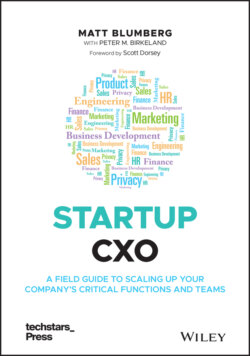Читать книгу Startup CXO - Matt Blumberg - Страница 24
Chapter 9 Pricing and Valuation
ОглавлениеEarly on for startups, valuation is not really done by some standard formula—there's not a published resource that you can use, or a seminar you can attend that will help you develop a valuation model. But there are some things to keep in mind as you go about developing your valuation model.
Seed round valuations are sometimes as simple as “Selling 10% of the company for $500k,” which implies a $5 million valuation. Obviously, the percentage and the price will depend on the team, the idea, and how far along the business was bootstrapped. More often for startups, the seed rounds will actually delay the valuation question by structuring the investment so that the valuation will be set as a discount to the next financing round. That is, you won't really have a valuation if you discount to the next round.
Lead investors in Series A or Series B rounds often want a convertible note or SAFE structure ranging anywhere from 10% to 25%. There are many (many!) exceptions to this general range, but an early‐stage VC will want to own enough of your company so there is still material ownership after some future dilution.
As the company matures, there are more standard valuation approaches. Often valuations can be based on multiples of revenue or profit (EBITDA) and things like growth rates, gross margins, and operating margins will all factor in a valuation as well. As revenue growth rates slow down, you will more than likely be valued on profitability metrics rather than revenue multiples.
When raising a venture round, you probably won't have much control over some of the key investor rights and protections, such as participating preferred, pro‐rata rights, anti‐dilution protections, and assorted required approvals. Again, we can point you to Brad Feld and Jason Mendelson's book, Venture Deals, for a more in‐depth discussion of investing documents. In most instances the terms are determined in the early rounds and then in later rounds investors will want the same rights and protections. If you are able to structure your Series A and Series B to have simple preferred securities with some of the standard protections and rights, you'll be able to keep it simple for the later rounds. Keeping it simple is better for the common holders and it also helps negotiations around future rounds remain straightforward. You won't need to unpack the “value” of unusual rights and preferences and can instead use more typical valuation metrics.
There are a number of key transaction items to consider that investors will want to negotiate with you. These include:
Liquidation preference. This refers to the payout order in case there is a liquidation event such as the sale of the company. Often it is simply the amount of money invested in the preferred equity of the company.
Participating preferred. Investors with preferred stock would get their liquidation preference first, then participate as if their preferred shares were converted into common shares. If there's a term like “1x” it means they get their investment back and their shares become common. “2x” means that an investor would get twice their investment back, then their shares would become common shares. There can be higher multiples depending on the investor and what you negotiate. This is less common in the 2020's but a good thing to be aware of in case it is part of a term sheet.
Pro‐rata investing rights. Pro‐rata rights provide an investor in the company the right to participate in a subsequent round of funding and still maintain their current level of percentage ownership in the company. For example, if an investor owns 10% of the company prior to a round, and the proposed new round is $10 million, they would have the right to put up to $1 million of the round, ensuring that they would still own 10% of the company. This is a common term to deal with in raising capital and it is also something that ends up being part of the new round of negotiations. Investors will often waive a portion of their pro‐rata right if it makes sense in the context of the round.
Board seats. Early rounds typically come with investors being able to name a member of the Board of directors. As you scale, new investors become less likely to get a Board seat, and the Board starts to add independent members who aren't investors or employees. Independent Board members play an important role with a unique point of view different from a CEO or investor.
Approval of new debt and equity. It is pretty common for preferred investors as a class to have approval rights on any material amounts of new debt or any new equity, including any increases in the employee option pool.
Information rights. Investors will have the right to monthly/quarterly financials, the cap table, projections, and typically a right to see a copy of the annual financial audit. Stages after the early stages will often require an annual financial audit by an outside accounting firm. You generally want to limit formal information rights to larger venture investors if you have a lot of small investors on the cap table. This will save you a lot of bother over time as you pick up shareholders via employee exercises and acquisitions.
